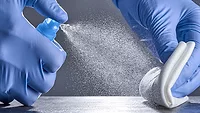How Cutting-Edge Bed Bug Tech is Changing the Game for Restoration Pros
The latest advances in bed bug detection and elimination are giving restoration professionals smarter, safer, and more effective ways to combat infestations

Credit: Oxford Scientific / The Image Bank via Getty Images
Bed bugs are back—and not just in folklore or your grandma’s cautionary tales. These tiny hitchhikers have resurged globally, wreaking havoc in homes, hotels, hospitals and high-rises. For restoration and remediation professionals, the task of eliminating bed bugs has never been more urgent—or more complex.
Thankfully, we’re no longer relying solely on chemical sprays and blind inspections. Today’s bed bug control tools are smarter, safer and more effective. From digital detection devices to heat-based eradication and biopesticides that work on a microbial level, the restoration industry now has access to a powerful suite of technologies that can outsmart even the most stubborn infestations.
But with all these options, it’s easy to get lost in the details. This article breaks down the latest tech, not just from a “what it is” standpoint, but how each one fits into the day-to-day realities of remediation work—cost, setup, safety, client disruption and of course, how well it actually works.
Dogs with a Nose for Bed Bugs
Let’s start with detection, because if you don’t find the bugs, you can’t fight them. Canine scent detection dogs have emerged as one of the most efficient ways to locate bed bugs and their eggs. These dogs are trained to sniff out live infestations with remarkable sensitivity, often detecting pests hidden deep in walls, furniture or clutter. In lab conditions, they’ve clocked in at up to 97% accuracy.
In real-world conditions, that number can vary—handlers play a critical role and overworked dogs can make mistakes. Still, when used properly, dogs can search a space in a fraction of the time it would take a human team to conduct a manual inspection. Better still, they do it without moving furniture or leaving behind any mess. For sensitive settings like offices, hotels or theaters, dogs offer a low-disruption, high-speed solution.
However, canine inspections come with a price tag. They’re not cheap, and many companies reserve them for high-risk or high-stakes environments. Also, while dogs can find the bugs, they can’t eliminate them—you’ll still need follow-up treatment. Think of them as your intel team, not your infantry.
Digital Detection: IoT Monitors Bring Bed Bugs Online
If you want to take detection a step further—or make it a 24/7 operation—sensor-based bed bug monitors might be your best bet. These small devices, often resembling pucks or pods, combine lures like CO₂ or pheromones with optical or thermal sensors. When a bed bug is lured into the trap, the device snaps a photo or logs its presence, then sends a real-time alert to your phone or laptop.
For restoration pros working in environments like hotels, dormitories or care facilities, this kind of early warning system is a game changer. It means infestations can be caught before they spread—or before guests find them and leave a one-star review. Because these sensors are unobtrusive and chemical-free, they don’t disrupt room occupancy and can be deployed long-term. Battery life often stretches to a year, and many systems integrate easily with existing wireless infrastructure.
The tech isn’t cheap upfront, and most solutions require a subscription for cloud monitoring. But when you weigh that against the cost of a full-blown infestation—thousands in treatment, lost revenue, reputational damage—it’s easy to see the ROI. These systems don’t eliminate bed bugs, but they drastically improve the timing and targeting of your remediation efforts.
Turn Up the Heat: Whole-Room Treatments for Total Eradication
When detection confirms an infestation, many professionals turn to heat—and for good reason. Whole room heat treatment is one of the few methods that can completely eliminate bed bugs, including eggs, in a single visit. By raising the temperature of an infested space to between 122°F and 140°F and holding it for several hours, heat penetrates mattresses, baseboards and even wall voids to kill bed bugs at every life stage.
This chemical-free method is ideal for environments where pesticide use is restricted or undesirable, such as hospitals, childcare centers or residences with chemically sensitive occupants. It’s also incredibly efficient when time is of the essence—one treatment and you’re done. Clients appreciate the ability to reoccupy a treated space the same day, without dealing with residual odors or follow-up cleanings.
Of course, that level of effectiveness comes at a cost. Heat treatment setups are extensive, involving large heaters, air circulators, power sources and real-time temperature monitoring. Technicians must protect or remove heat-sensitive items and reposition equipment to ensure even heating. Poor heat distribution is one of the most common failure points. Still, when executed correctly, the payoff is significant—nearly 100% kill rates and minimal risk of recurrence.
The Cold Alternative: Cryogenic Freezing with CO₂ Snow
If heat is your hammer, cryogenic freezing is your scalpel. This method uses compressed carbon dioxide to produce a super-cooled “snow” that freezes bed bugs instantly on contact. The process leaves no residue and is safe to use around electronics, books and delicate materials. It’s particularly useful in areas where heat or chemicals are not practical, such as vehicles, food processing environments or museums.
Cryo systems are relatively easy to set up—just a tank, hose and nozzle—and the treatment is quiet and unobtrusive. Occupants can usually remain nearby, making it a great choice when client disruption needs to be kept to an absolute minimum.
The trade-off? Cryo is a contact kill method. It doesn’t penetrate, and it doesn’t leave behind any residual protection. Bugs hidden in deep folds or crevices can survive unless treated directly. For that reason, it’s often used as a spot treatment or in tandem with other methods. Think of it as a precision tool that fits nicely into a broader IPM strategy.
Chemicals, IGRs and Biopesticides: Smarter, Safer Sprays
Chemical treatments still have a place in the restoration toolbox, but the approach has become far more sophisticated. Today’s professionals use combinations of fast-acting sprays, residual dusts and insect growth regulators (IGRs) to maximize impact and reduce the risk of resistance.
IGRs like hydroprene or pyriproxyfen don’t kill bugs outright—they disrupt their development and reproduction. Used alongside a quick-kill agent, IGRs act like birth control for bed bugs, collapsing the population over time and preventing rebound. These formulations are generally safe for humans and pets, with minimal downtime needed after application.
Meanwhile, biopesticides like Aprehend®, which uses a naturally occurring fungus (Beauveria bassiana), have become a breakthrough in the fight against pesticide-resistant strains. Once bed bugs cross a treated surface, the spores latch on, penetrate the exoskeleton and kill the bug from the inside over several days. The fungus can even spread from bug to bug, creating a cascade of infection. Though the kill isn’t instant, the residue can stay effective for up to three months—offering long-term control with a single treatment.
For restoration professionals, these innovations mean fewer repeat visits, safer environments for clients and more flexible treatment options. Education is key here: clients need to understand that some of these treatments work over time, and that seeing a few bugs in the days following treatment doesn’t mean it failed—it means it’s working.
IPM Platforms and the Smart Building Revolution
Perhaps the biggest shift in bed bug remediation isn’t a treatment at all—it’s how we manage the process. Integrated Pest Management (IPM) platforms now allow technicians to log inspections, upload images and generate real-time reports all from a smartphone or tablet. Some systems even tie into building management software, alerting teams to potential issues based on tenant reports or sensor data.
This level of coordination improves communication, ensures accountability and turns reactive treatment into proactive prevention. For commercial clients, especially in multi-unit housing or hospitality, it’s a must-have.
Tools Are Only as Good as the Technician
In the end, technology is a force multiplier—not a magic bullet. The most advanced sensors, sprayers or heaters won’t fix poor planning, lack of training or shoddy execution. But in the hands of a well-trained, thoughtful restoration professional, these tools unlock new levels of precision and efficiency.
Bed bugs aren’t going anywhere anytime soon. But with today’s arsenal, we don’t have to fear them. Restoration pros now have the tools—and the tech—to tackle infestations smarter, safer and faster than ever before.
And that’s something we can all sleep better knowing.
Looking for a reprint of this article?
From high-res PDFs to custom plaques, order your copy today!








